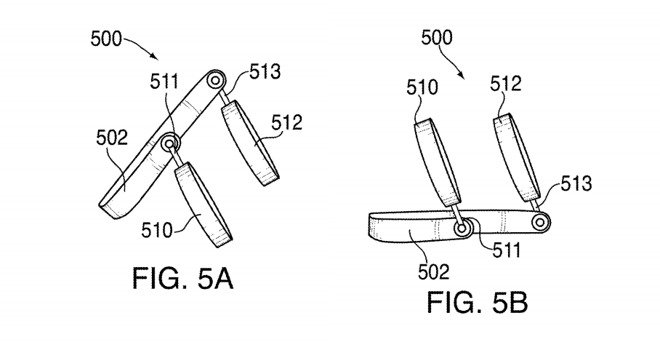Apple patents point to headphones that could act as speakers while having better sound isolation

What you need to know
- A new patent outlines plans to create headphones that can also be used as speakers.
- A seperate patent includes plans to improve sound isolation and dampening.
- Apple patents everything, so it's possible none of this will ship.
Two new patents, spotted by Apple Insider, point to a rethinking of how headphones will be used in the future. While the ability to turn headphones into a speakers might sound the most appealing, it's the improved sound dampening that could be the biggest deal.
Let's start with "Headphones with tunable dampening features," granted to Apple by the US Patent and Trademark Office. This appears to be designed to help alleviate a problem that most headphones with closed backs tend to have. Becauase there's nowhere for sound to go unwanted sound can be trapped within the earcup. That then has a degrading affect on the sound while the trapped air also impacts comfort. This patent claims to help prevent that.
For the concept, Apple proposes the use of acoustic dampeners surrounding the speaker in the earcup, with the dampeners configured to dampen standing wave resonances at multiple frequencies. The multiple dampener chambers are bound to the housing by a solid film layer.Variations of the claim include the use of sidewalls to define the direction of waves within the chambers and near the film layer, the use of acoustic dampening materials, and even using multiple dampeners tuned to the same frequency. Pluralities of acoustic resonators and Helmholtz resonators are also tipped for use.
The second patent, "Dual mode headphones and methods for constructing the same," is also plenty interesting. The theory is that the headphones would act normally when the earcups are in the standard headphone position. But when they are titled outwards they could then become speakers. Associated circuitry would also be needed in order to boost the audio output, with sensors potentially also ensuring that speaker mode cannot be enabled when the headphones are being worn.
The position detection will also help prevent the speaker mode from being engaged if there is a chance the wearer is using the headphones near the ear. While it could detect the movement of an articulated component in the body for modes, others could be used to sense if a speaker is near a user's body and to prevent audio-related injury, with the list of sensors including photoresistive, capacitance, proximity, IR, ambient light, Hall Effect, resistive, and electrical signal sensors.
Now is probably a great time to remind everyone that Apple tends to apply for patents for anything and everything its engineers design. That doesn't always mean that we will see a product that incorporates those designs. However, given Apple's interest in making sure sound is as enjoyable as possible I wouldn't want to bet against either of these things coming to pass.
iMore offers spot-on advice and guidance from our team of experts, with decades of Apple device experience to lean on. Learn more with iMore!

Oliver Haslam has written about Apple and the wider technology business for more than a decade with bylines on How-To Geek, PC Mag, iDownloadBlog, and many more. He has also been published in print for Macworld, including cover stories. At iMore, Oliver is involved in daily news coverage and, not being short of opinions, has been known to 'explain' those thoughts in more detail, too.
Having grown up using PCs and spending far too much money on graphics card and flashy RAM, Oliver switched to the Mac with a G5 iMac and hasn't looked back. Since then he's seen the growth of the smartphone world, backed by iPhone, and new product categories come and go. Current expertise includes iOS, macOS, streaming services, and pretty much anything that has a battery or plugs into a wall. Oliver also covers mobile gaming for iMore, with Apple Arcade a particular focus. He's been gaming since the Atari 2600 days and still struggles to comprehend the fact he can play console quality titles on his pocket computer.
